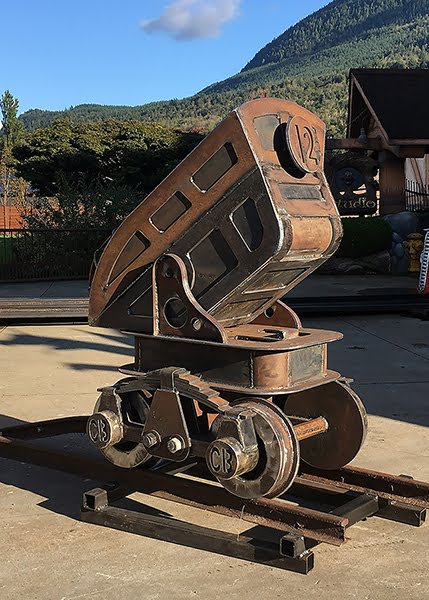I often get asked to talk about a 'typical sign' and how we build them. The answer is most signs we build aren't typical. But they do follow a pattern. I decided to do a small series of posts on a more 'normal' kind of sign - the kind most sign shops might tackle. I'll cover it from start to finish.
This sign was for a chiropractor. He has just refurbished his building and wanted a new monument sign out front. The building was a historic farm house and looked pretty good. I based the first design on the photograph he provided.
The rock work on the bottom of the sign was to be faux stone so I went to my supplier's website and downloaded the picture of the rock. I photoshopped this onto the drawing to illustrate how it would look.

My client liked my first design but decided he would rather have the chiropractor's symbol instead of the building picture. I found the vectors for that logo online.
The second design was approved by my client.
I designed the sign cutting files in EnRoute. The sign face was cut from 1.5" Precision Board which would be laminated to an additional six layers of 1" thick Precision Board. My client wanted a chunky sign!

Once the board was cut I fitted the 4" x 4" steel tubing into the cutouts and tacked up the frame.

I then finished the welding and added the base plates. I had asked my client to pour a concrete pad six inches below the finished grade where the sign was going. This would allow us to simply lift the sign into position, drill some holes in the concrete, pound in some anchor bolts and tighten the nuts to do a quick and simple install. The stand would also allow me to work on the sign safely in the shop. Note the vertical bar which fit into the middle layer of the sign. This bar is the structure for lifting the sign. I welded a threaded nut to the top into which I twisted an anchor bolt. This was removed when the sign was placed onsite.
I then glued and screwed the layers of the sign together. Note how the one part urethane glue tends to bubble out as it cures. This can be wiped up as it squeezes out but we have a little different approach.
For the next stage we use an air powered die grinder to purposely add texture to the sides and back of the sign. This step also gets rid of that pesky glue. For some reason I timed how long it took me to do the texturing with the die grinder... it was thirteen minutes. I should note that when the good doctor came to approve his sign he walked around the sign admiring it. He ran his hand over the texture on the car and sides of the sign and asked me if I had done that by hand. I nodded. He then said 'It must have taken a LONG TIME!' I smiled and told him he had no idea how long it had taken me. He then happily wrote me the check, feeling good about the value I had put into the project.
I have no doubt that if I had sanded it perfectly smooth he wouldn't have mentioned it, simply assuming that machines had done the work. :)

The screw holes were filled in with epoxy putty... no sanding required as it blended into all that texture.


I then welded up a pencil rod frame. The wire lath would attach to this framework.


The galvanized lath comes in three weights... we use the medium weight. It is cut to size with the snips and a pair of end cutters is used to twist the rebar tie wire to fasten on the lath. The wire is bent into a hook and then inserted through the lath to hook around the pencil rod. It is then pulled back through the lath and twisted and cut flush with the surface. This job takes practice to get good and fast.

With the wire in place it is time to go to the next step... and I'll cover that next time. Stay tuned...




















































